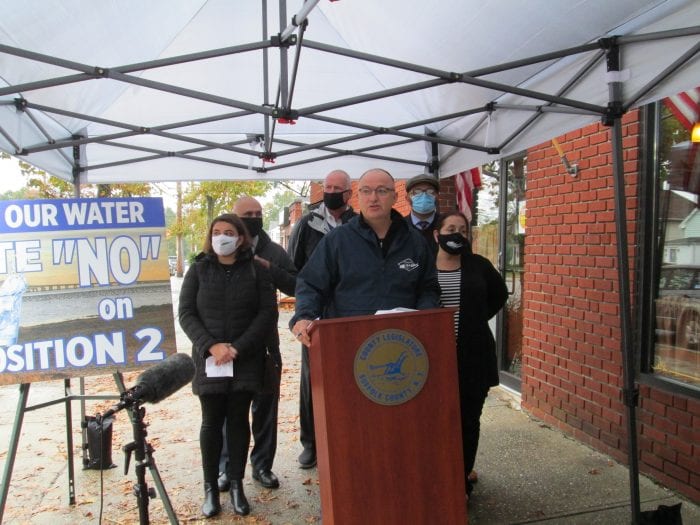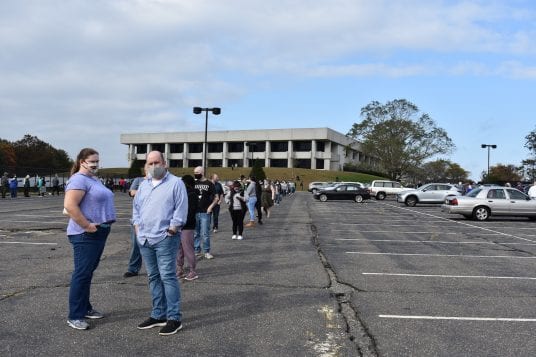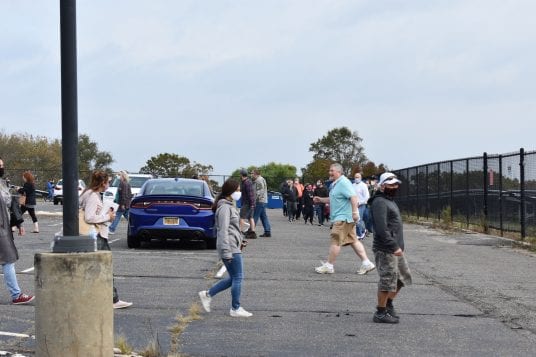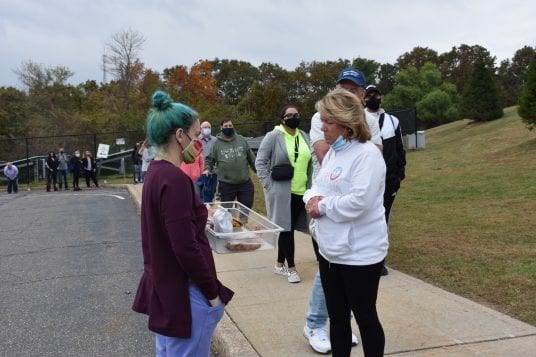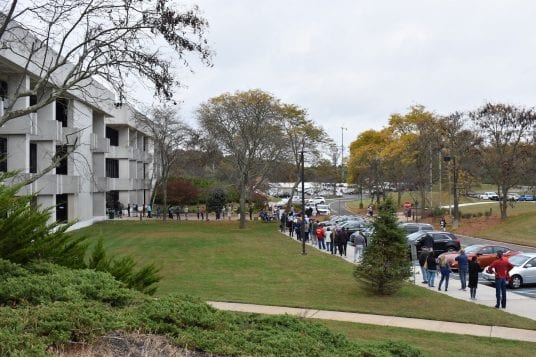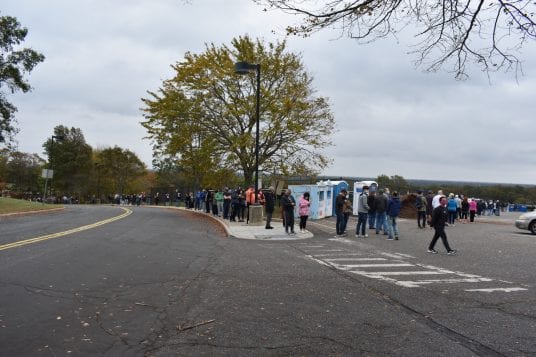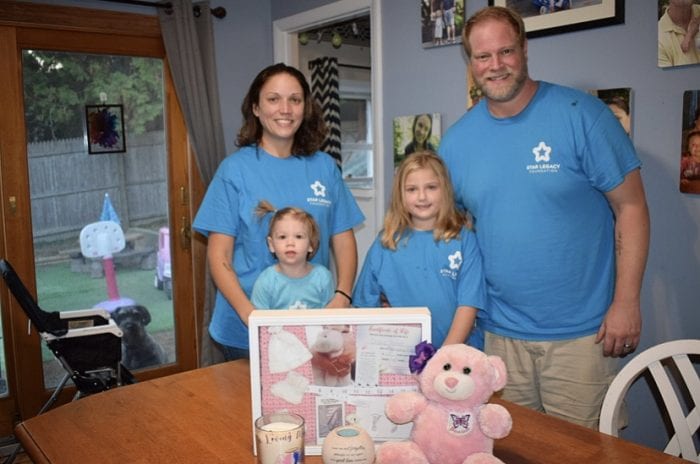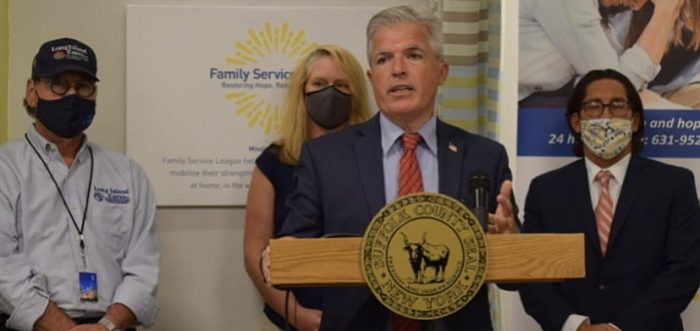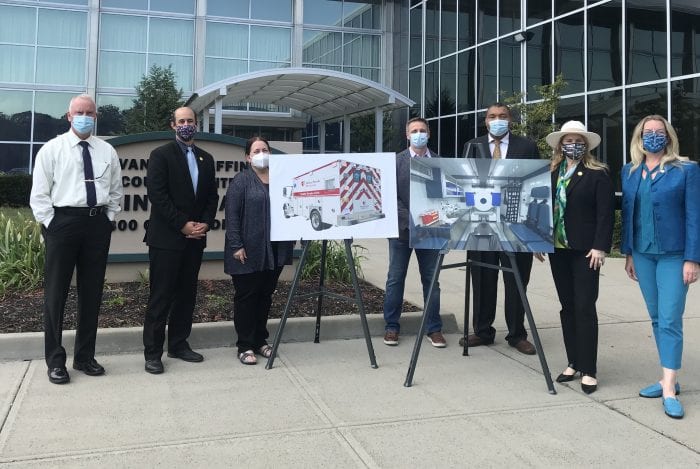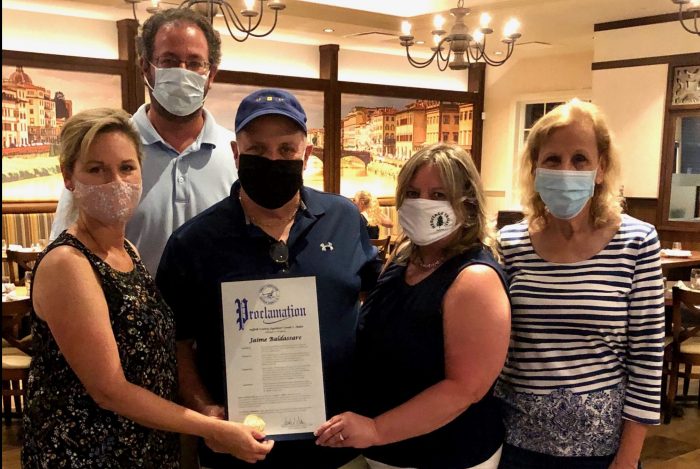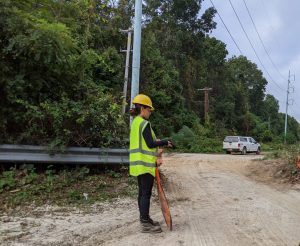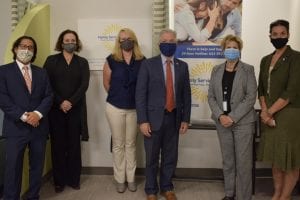Several Suffolk County Legislators and a New York assemblyman urged residents to reject proposal 2, which County Executive Steve Bellone (D) put on the ballot to help close the financial gap caused by the pandemic.
If approved, the proposal, which was added to the ballot in July after a 14-3 vote in the county Legislature, would reduce the sewer stabilization fund by $180 million and move $15 million to the general fund. Bellone had proposed the moves to shore up the county’s finances after the economy stopped during the COVID-19-related shutdown.
“My hope is that Suffolk voters will ultimately see this proposal for what it is – a ploy to bail out Bellone’s mismanagement,” Legislator Rob Trotta (R-Fort Salonga) said in a statement.
“Proposal two has to be defeated,” Lee Koppelman, former Executive Director of the Long Island Regional Planning Board and the past head of the SUNY Stony Brook Center for Regional Policy Studies, said in a statement. “It is wrong to take money from a dedicated fund to balance the budget.”
While several of the politicians who opposed the proposal were republicans, Assemblyman Steve Englebright (D-Setauket) also decried the measure.
“I already voted and I voted against Proposition Two,” Englebright said in a statement. “I am totally against taking money from this fund to cover county expenses and I encourage the residents of Suffolk County to vote no, too.”
The Long Island Pine Barrens Society also opposed the proposal, suggesting the area needed the funds were needed to replace polluting septic systems with nitrogen-removing technology as well as sewers.
The Suffolk County Drinking Water Protection Program was created in 1987 by a 0.25% sales tax to fund water quality initiatives, the preservation of open space and control taxes in sewer districts.
Bellone has indicated that the measures would prevent layoffs of county workers that might be necessary to balance the budget. He also said on several calls to get the measure on the ballot that the county would not spend any less money on existing environmental programs.
The county executive has also indicated that the sewer funds can either protect taxpayers against higher sewer tax rates or against higher taxes that might be necessary to prevent a reduction in services.
On the ballot this year is also Proposition 1, which will extend the term of legislators from two years to four years.

